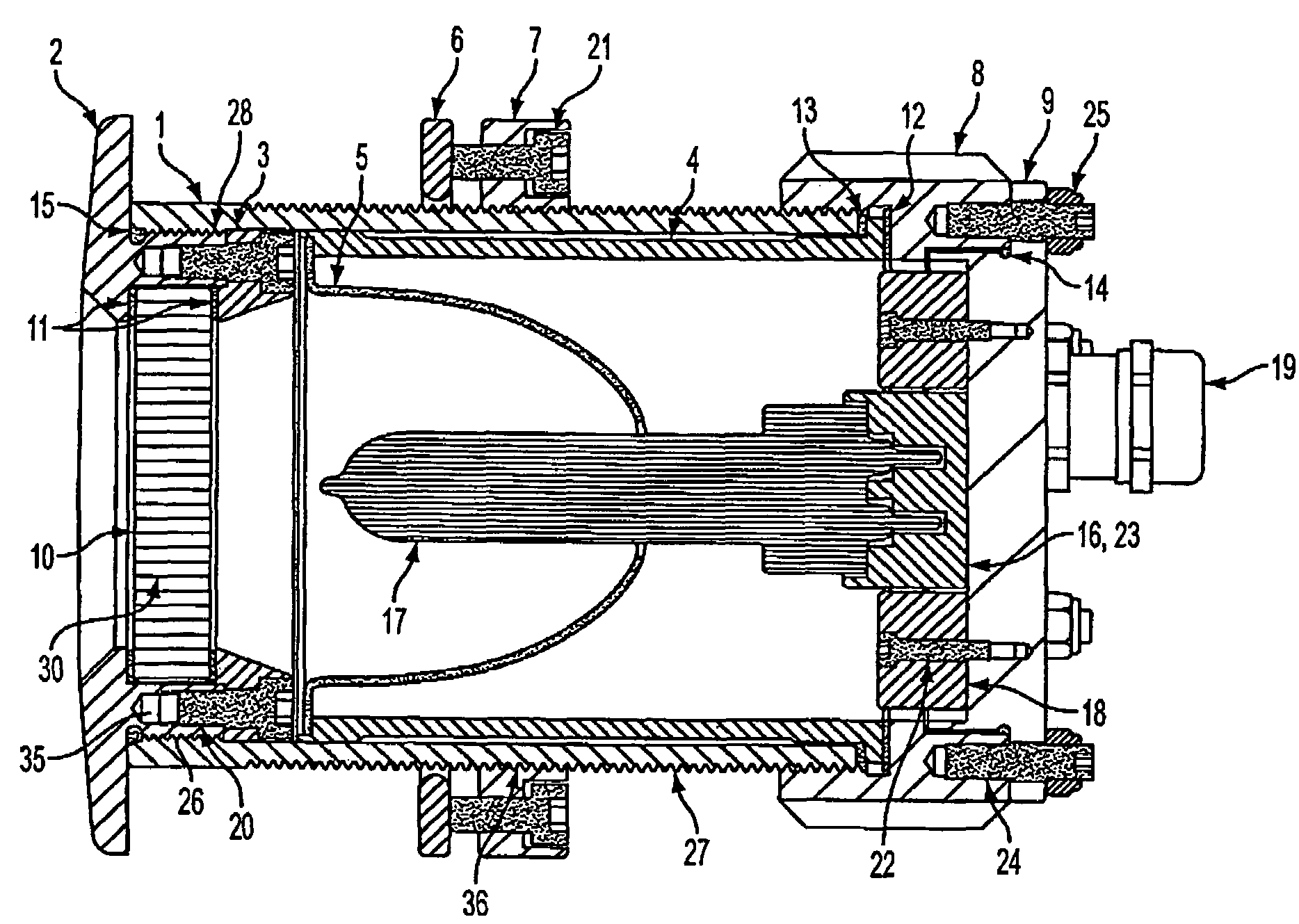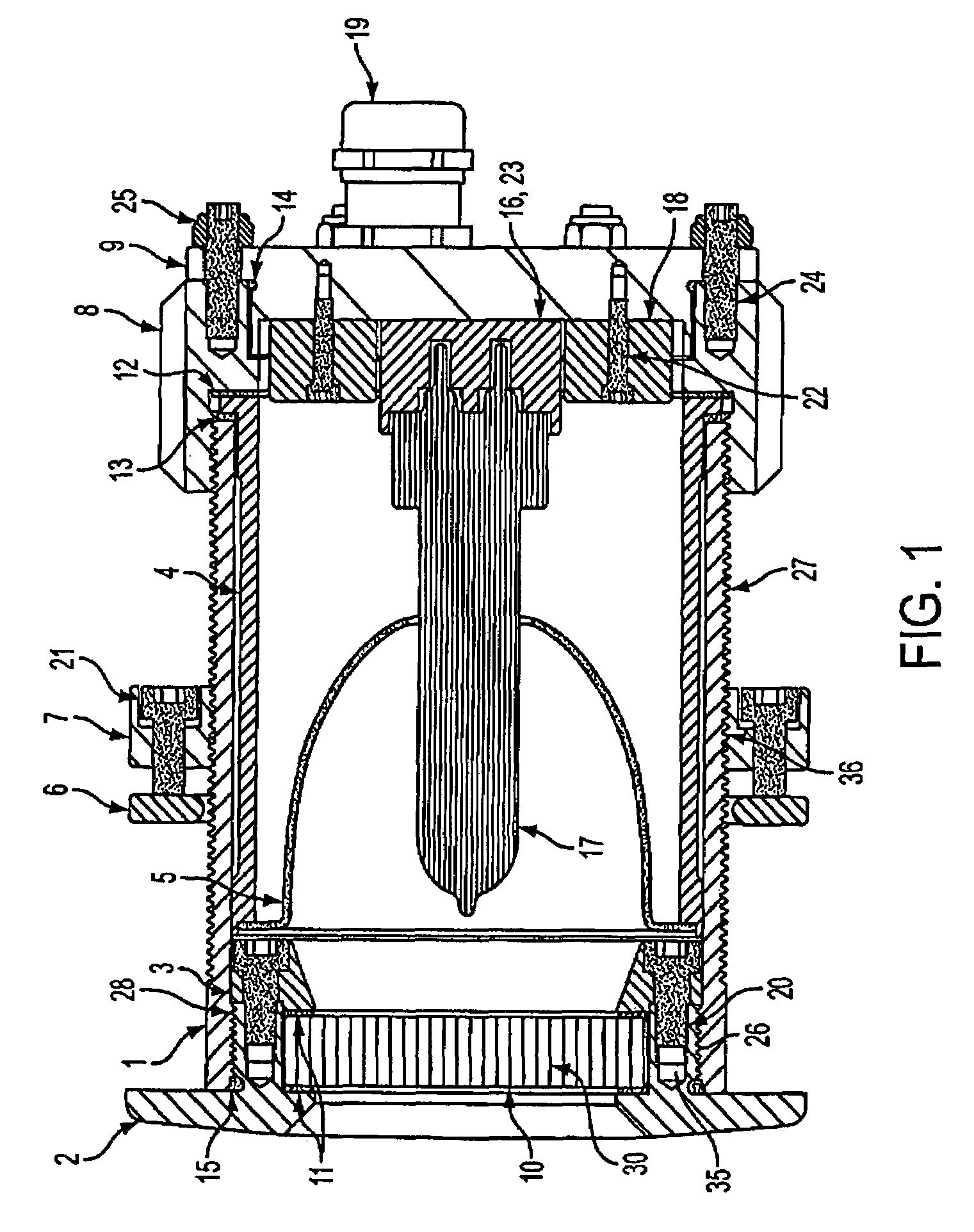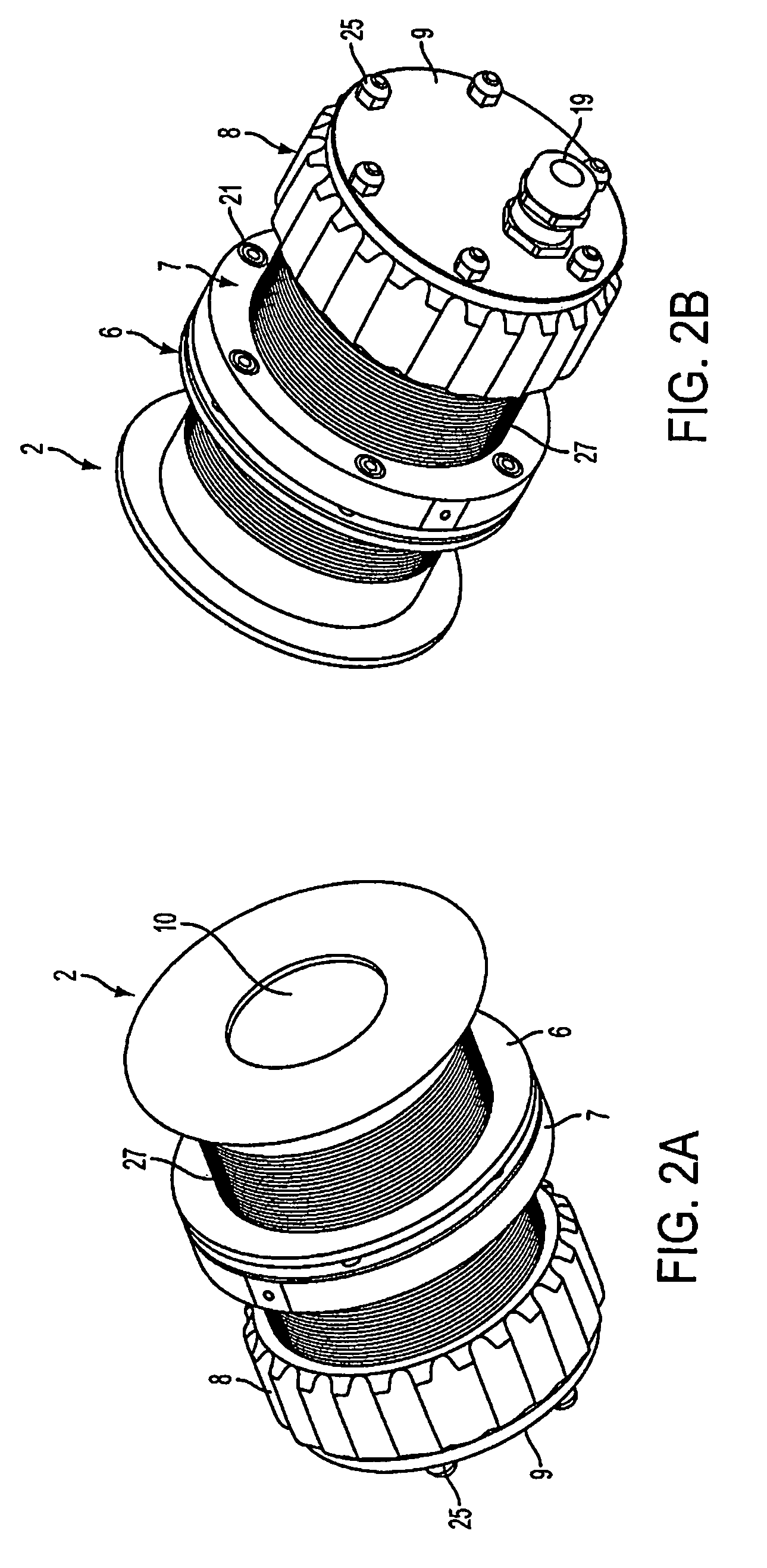Two piece view port and light housing with integrated ballast and high intensity discharge lamp
a technology of ballast and discharge lamp, which is applied in the direction of transportation and packaging, underwater equipment, lighting and heating equipment, etc., can solve the problems of not being waterproof or watertight, easy to be obstructed, and the lights mounted on the exterior of the boat often need replacement and repair
- Summary
- Abstract
- Description
- Claims
- Application Information
AI Technical Summary
Benefits of technology
Problems solved by technology
Method used
Image
Examples
Embodiment Construction
[0018]The present invention is a two-piece thru-hull view port assembly constructed to have a watertight fit in the hull or deck of a vessel. The view port assembly may be used as, but not limited to, a viewing tool or window for the eye or for housing lights, still cameras or video cameras.
[0019]Referring to FIG. 1, a flange 2 having an inner and outer face is used as the exterior mounting to the side of the vessel at the opening of the thru-hull. A substantially transparent lens 10 having a top and a bottom surface is removably mounted on the inner surface of the flange 2 and provides a window for viewing the outside of the vessel from within the interior of the vessel.
[0020]Lens 10 is in the shape of a disc and preferably has smooth, rounded edges and is composed of heat and pressure-resistant borosilicate. As will be appreciated by one of skill in the art, any substantially transparent material may be used that is resistant to high temperature, high pressure, erosion and damage ...
PUM
 Login to View More
Login to View More Abstract
Description
Claims
Application Information
 Login to View More
Login to View More - R&D
- Intellectual Property
- Life Sciences
- Materials
- Tech Scout
- Unparalleled Data Quality
- Higher Quality Content
- 60% Fewer Hallucinations
Browse by: Latest US Patents, China's latest patents, Technical Efficacy Thesaurus, Application Domain, Technology Topic, Popular Technical Reports.
© 2025 PatSnap. All rights reserved.Legal|Privacy policy|Modern Slavery Act Transparency Statement|Sitemap|About US| Contact US: help@patsnap.com



